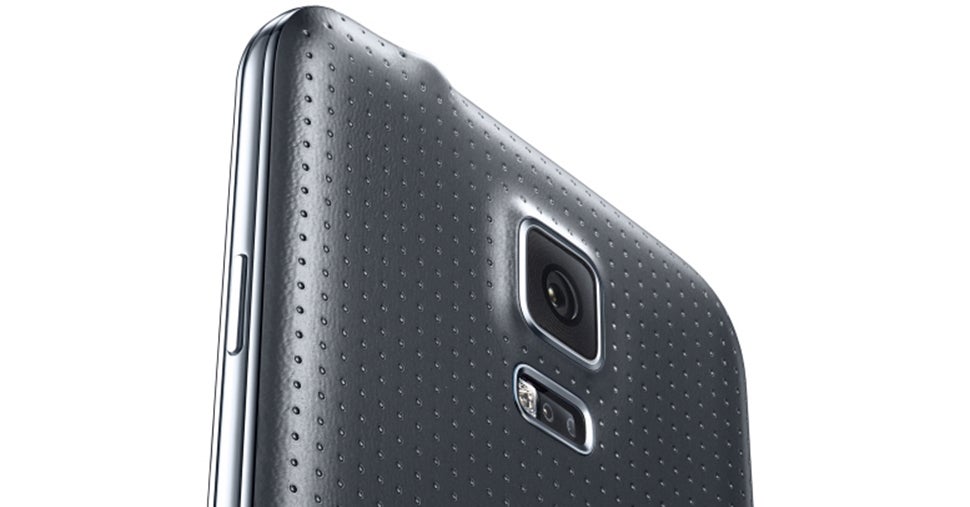 Samsung has never been a leader when it comes to smartphone cameras but with the Galaxy S5, it's taken a step forward.
Samsung has never been a leader when it comes to smartphone cameras but with the Galaxy S5, it's taken a step forward.It has nothing to do with megapixels—instead it's all about that weird-sounding feature called "phase-detect" autofocus, which allows the camera to focus in just .3 seconds. Samsung claims that's the fastest in the world, and it could seriously change how you use the camera.
We've tested basically every smartphone camera, and it's astounding how quickly their quality has been improving over the years. Low-light quality has never been better, and in recent years, the megapixel counts have been soaring, without seeing any of the corresponding loss in image quality you'd expect.
One thing we haven't heard a lot of—but you can expect to now—is claims about how fast a camera is. Think about how important speed is. If your buddy slips and falls embarrassingly, you want to be able to whip out your camera and snap the picture as quickly as possible, before the shock leaves their faces and they've got time to recover. You want to get the hilarious agony of the moment.
The Samsung Galaxy S5 has a higher resolution camera 16 megapixel camera, but what's really important, is that as far as we can tell (tell us if we're wrong!), it's the first camera on a smartphone to use phase-detect autofocus. Traditionally, digital cameras that don't have a mirrorbox—IE, point-and-shoots and mirrorless cameras—use contrast detection autofocus. In this method, the contrast between nearby pixels is measured, and the camera's lens is adjusted until this contrast is maximized. This system has a lot of drawbacks: It's coarse, it's slow, and more importantly in situations where there's not a lot of contrast (or light) in a scene to begin with, it doesn't work very well.
Phase detection autofocus was commonly used on SLR cameras with mirrors, but it's only recently started trickling into mirroless cameras over the last couple of years, as part of the "hybrid" systems that enable shooters like the Sony A6000to focus crazy fast. The contrast detect autofocus gets you close, but the fine adjustment is performed by phase detection which compares the actual light received by the sensors, rather than just the contrast.
In the real-world, you can't underestimate the important of shooting with a fast AF system. It's one of the most important features we test when we're reviewing cameras. You're probably familiar with the experience of a camera that "hunts" for focus—moving in and out of clarity until it settles on the best spot You've also probably noticed the frustration that occurs when you've got an autofocus hunts and then settles on a spot that's totally wrong, as if it just gave up. The new phase detection will help remedy some of this frustration.
Or rather itshouldhelp, assuming it works properly. We'll have to wait and see how well this new phase detection works on the camera when we've had the chance to test it out in real life.
Original Story Found On Gizmodo
 How do you solve the problem of choking road traffic in one of the world's bustling megacities? You bring in the robot cops.
How do you solve the problem of choking road traffic in one of the world's bustling megacities? You bring in the robot cops. Nokia is officially launching its very first Android devices, known as the X and the X+, on stage at its annual Mobile World Congress press conference. We were all taken aback by the second ( and third) device (since only one leaked), but either way it's still incredible to see Nokia take this particular approach. The X will have a 4-inch, 840 x 480 IPS screen, 512MB RAM, 4GB of storage expandable storage via microSD slot and 3-megapixel camera, while the X+ sports the same specs but more RAM (768 MB) and an included 4GB microSD card.
Nokia is officially launching its very first Android devices, known as the X and the X+, on stage at its annual Mobile World Congress press conference. We were all taken aback by the second ( and third) device (since only one leaked), but either way it's still incredible to see Nokia take this particular approach. The X will have a 4-inch, 840 x 480 IPS screen, 512MB RAM, 4GB of storage expandable storage via microSD slot and 3-megapixel camera, while the X+ sports the same specs but more RAM (768 MB) and an included 4GB microSD card. You won't be getting Google's apps or Play store, however as both handsets will be based on the forked AOSP Android OS. Nokia says that'll have the advantages of the Android ecosystem, but with a "differentiated experience." So far,Here Maps, MixRadio, Skype and Outlook are being featured on the Nokia Store.You can access the Nokia and third party stores using the devices, but not Google Play, obviously. We've heard SwiftKey will be available on the Nokia X range, as will BBM, which is also coming to Windows Phone sometime "this summer."
You won't be getting Google's apps or Play store, however as both handsets will be based on the forked AOSP Android OS. Nokia says that'll have the advantages of the Android ecosystem, but with a "differentiated experience." So far,Here Maps, MixRadio, Skype and Outlook are being featured on the Nokia Store.You can access the Nokia and third party stores using the devices, but not Google Play, obviously. We've heard SwiftKey will be available on the Nokia X range, as will BBM, which is also coming to Windows Phone sometime "this summer." I thought it was just me but apparently it's a worldwide problem. It's been down for a few hours now causing mass hysteria (jk). So to avoid any confusion and
I thought it was just me but apparently it's a worldwide problem. It's been down for a few hours now causing mass hysteria (jk). So to avoid any confusion and  The aroma of rich coffee wafts through the air as Xolile Malindi leans behind the counter of House of Machines, a hip café in the heart of Cape Town. Opposite him, a young customer approaches the bar, taking his wallet out to pay for his double espresso made of organic Arabica beans.
The aroma of rich coffee wafts through the air as Xolile Malindi leans behind the counter of House of Machines, a hip café in the heart of Cape Town. Opposite him, a young customer approaches the bar, taking his wallet out to pay for his double espresso made of organic Arabica beans.

 The world's largest solar plant is awesome—unless you're a bird like the one in this image published by the corporation BrightSource Energy. This bird flew over the plantand was killed by its deadly heat levels, which can reach 1,000 degrees Fahrenheit (537C). Apparently, this was expected.
The world's largest solar plant is awesome—unless you're a bird like the one in this image published by the corporation BrightSource Energy. This bird flew over the plantand was killed by its deadly heat levels, which can reach 1,000 degrees Fahrenheit (537C). Apparently, this was expected.
 The
The  If you're a "zombie aficionado," a "Web marketing guru" or a "social media evangelist," you may be doing Twitter wrong.
If you're a "zombie aficionado," a "Web marketing guru" or a "social media evangelist," you may be doing Twitter wrong. The idea was meant to be a way for people to realize the ridiculous lengths others -- and, alas, themselves -- go to to craft their Twitter bio as neatly and perfectly as a Wes Andersen movie," Digiday staffer Jack Marshall said in a blog post.
The idea was meant to be a way for people to realize the ridiculous lengths others -- and, alas, themselves -- go to to craft their Twitter bio as neatly and perfectly as a Wes Andersen movie," Digiday staffer Jack Marshall said in a blog post. The tipsters haven't shed new light on the hardware itself, but they support beliefs that the device's customized interface will revolve around Microsoft and Nokia services while stripping out Google content. If the leak is accurate,
The tipsters haven't shed new light on the hardware itself, but they support beliefs that the device's customized interface will revolve around Microsoft and Nokia services while stripping out Google content. If the leak is accurate,